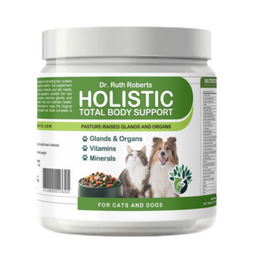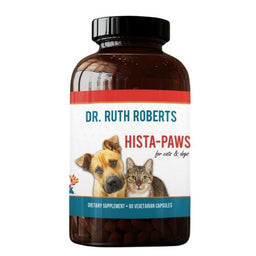Cats instinctively have an impressive ability to conceal their pain over centuries, primarily as a survival strategy. This skill becomes especially crucial in the wild, where any display of vulnerability could attract potential predators. Consequently, cats often endure discomfort silently rather than revealing their pain.
As a responsible cat owner, it's essential to be vigilant for subtle signs of pain in your feline companion, as they may not always overtly show it. Understanding their body language plays a pivotal role in recognizing any signs of discomfort they might be experiencing.
In recent times, many cat owners have shifted towards natural methods for alleviating pain in their pets. These natural remedies are gentle and align well with a cat's physiology, addressing both their pain and overall well-being. These approaches often incorporate herbs, essential oils, and other natural ingredients, reducing the risk of adverse side effects commonly associated with conventional medications. Opting for natural pain relief for your cat demonstrates a profound level of care and can offer a safer alternative for their well-being.
How to Tell if Your Cat is in Pain
Understanding when your cat is in pain can greatly improve its life and strengthen your connection. Here's what to look out for:
- Restlessness and Trembling: If your cat seems more agitated than usual, shaking or twitching, it could mean they're in pain.
- Unusual Vocalizations: Cats are quiet by nature, so if they start crying, growling, or hissing more than usual, they might be hurting.
- Movement Problems: If your normally agile cat is struggling with jumping or climbing, this could be a sign of joint or limb pain.
- Disliking Touch: Cats usually love being petted. If they start avoiding touch or seem sensitive when you pet them, they might be in discomfort.
- Less Playful: A decrease in playfulness can signal that your cat isn't feeling well, as cats often withdraw from playing when in pain.
- Focused Licking: If your cat is excessively licking a specific area, they might be trying to soothe pain or irritation there.
- Increased Aggression: Pain can make a cat more aggressive. Watch for sudden angry outbursts or defensive actions.
- Changes in Posture or Walking: Any alteration in how they sit, stand, or walk, like stiffness or favoring one side, can indicate pain.
By noticing these signs, you can provide timely care and relief, deepening the bond with your cat. Your careful attention ensures their comfort and shows your commitment to their well-being.
Natural Pain Relief Remedies For Cats
When it comes to soothing your cat's pain, a holistic approach can be highly effective. This guide covers natural remedies that not only address pain but also promote overall health.
Herbal Remedies: Cat's Claw and Turmeric: Herbs like Cat's Claw and Turmeric are great for pain relief. Cat's Claw, or Uncaria tomentosa, a vine from the Amazon, has compounds known for their anti-inflammatory and pain-relieving properties. Turmeric, containing curcumin, is also famous for its anti-inflammatory effects. Together, they can significantly reduce your cat's discomfort.
Essential Oils: Safe Usage for Cats: Some essential oils, like lavender and chamomile, are known for their calming effects and can help ease pain. However, it's crucial to use them safely and in moderation, as not all essential oils are cat-friendly.

CBD Oil for Cats: CBD oil, especially products like CBD Oil Ease and CBD Oil Heal from CBD Dog Health, can be beneficial. These contain full-spectrum hemp oil, which is known for its potential therapeutic benefits.
Massage and Physical Therapy: Gentle massage and therapy techniques can be soothing for cats. They help improve circulation, relieve muscle tension, and stimulate endorphin release, providing comfort and relaxation.
Proper Nutrition for Pain Management: A diet rich in anti-inflammatory foods can significantly help with pain management. A healthy diet like The Original CrockPet Diet can be your best option, as it incorporates a variety of anti-inflammatory foods in its ingredients. Get the recipe and dietary tips tailored to support your cat's journey towards relief.
Home Comforts for Pain Relief: Creating a stress-free environment at home is essential for a cat in pain. Cozy spaces and calming elements can turn your home into a sanctuary for healing and comfort.
For more detailed guidance on supporting your pet at home, consider exploring resources like our blog on pet preparedness.
Conclusion
After starting your cat on a natural remedy, it's important to closely monitor their reaction to it. Pay attention to any changes in their behavior, comfort level, or how easily they move around. Look for positive signs like increased mobility or reduced pain. However, also be alert for any negative reactions. Recording these observations is key to evaluating how well the remedy works and deciding if it needs to be adjusted.
Keep in regular contact with your vet or a qualified pet health coach. Sharing updates about your cat's condition helps them make better-informed decisions about their ongoing treatment.
Natural remedies offer numerous benefits for our beloved cats. They address not just the pain but also contribute to overall health. These methods are generally safer than traditional pharmaceuticals, as they often come with fewer side effects. By opting for natural treatments, you're choosing a holistic approach that cares for both the physical and emotional well-being of your cat.










